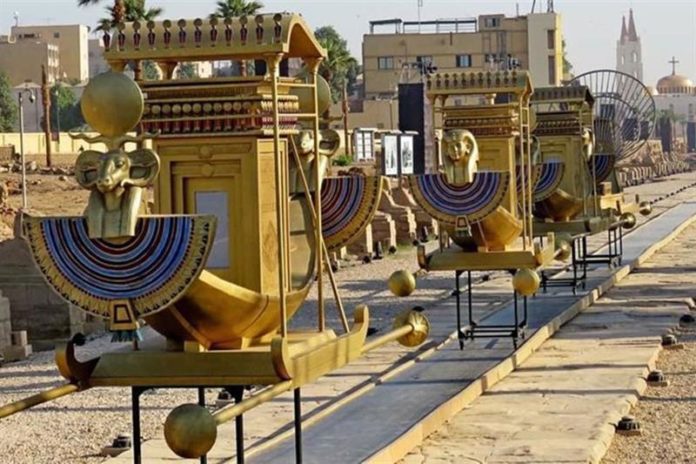MEO reporter Amira Elhamy , had the pleasure to interview tour guide Nesrine Mahfouz, to present to you all you need to know about the exceptional history of Avenue of Sphinxes; the avenue that is gracefully connecting two fabulous historic temples in Luxor.
The whole world is currently waiting to see the specular opening of one of the most significant touristic venues in Egypt, which is Avenue of the Sphinxes; connecting two magnificent temples located in Luxor, this avenue gained great significance throughout history.
Nesrine Mahfouz explains that Luxor as a significant Egyptian city; it witnessed various historical changes throughout history. During the ancient Egyptian time, around 2600 BC, Egypt’s Capital was Memphis, Luxor at that time was subordinate to upper Egypt; however following the middle kingdom and after the war with the Hyksos, Luxor became the capital of Egypt and its name was “Wosat”.
After the Greek came to Egypt; they were unable to pronounce the hieroglyphic name so they called it Thebes. Following when the Arabs came to Egypt in the 7th century AD; they visited Thebes and in fact they were astonished from all the huge columns and the magnificent entrances of different ancient temples and since they had no experience in excavation they thought the temples were the remaining of ancient palaces or “Kosour” in Arabic; hence they called it the city of palaces which stands for “Al Aksor” in Arabic.
When Luxor was the capital during ancient Egyptian times; pharos had to build temples for the national god “Amoun Ra3”; who was worshiped by all Egyptians. Al Karnak, one of the biggest temples not only in Egypt but around the world, was built; followed by Luxor temple.
Between both temples lies an avenue connecting both temples, and in fact both sides of the avenue are decorated with statues of Sphinxes. The statues by the side of Karnak temple got the head of a male sheep or a ram which represents the national god Amon Ra3; however the statues by the side of Luxor temple got the body of a lion with the head of a human being.
This special celebration was held to celebrate the season of the Nile flood, this was the season of fertility, where the Nile comes with all the silt to flourish the agriculture lands; during this celebration the golden statue of the national god “Amoun Ra3” was taken on a boat held by priests to be taken from Al Karnak temple to Luxor temple, and once the national god reach Luxor temple it was transformed to Min, the fertility god . It was actually known at ancient times that during this celebration women who suffered from infertility, used to attend the ceremony to receive the blessings of gods.
The statue of the god was placed in a dark spot inside the temple called the Holy of the Holies; this was actually the first part to be built in any temple. The spot used to embrace a boat made of cedar wood and over the boat lies the god statue.
“No one was allowed to enter the Holy of the Holies except the King and the head of the priests”; explains Mafhouz; in fact they had to cut their nails and shave all the hair in their bodies before entering this place; also they had to wash themselves in the Nile first and after warp themselves with white cloth. The Holy of the Holies was considered a treasury room.
Mahfouz notes that on November 25th; the grand opening of the avenue of Sphinxes will take place. “ Sure the celebration will represent the ritual journey of Amon Ra3; a rail way is set and prepared for boats to walk over it between both temples.” Says Mahfouz
Mahfouz explains that Luxor is a beautiful governorate that is actually selling itself; actually it doesn’t need much publicity; tourists come to see the magnificent temples from all around the world.
“Luxor is actually like an open museum; however I expect that the coming celebration of the opening the avenue of sphinxes after its restoration; will sure boost the number of tourists coming to Luxor.”
“Renewing the road is sure a significant step; in fact this road used to be full of statues in the ancient time, however, they were buried under the dust and actually small houses were randomly built around it; when I used to make tours in Luxor I used to try to show the tourists some of the buried statues and they were wishing to see all the statues well- presented and well placed on the top of the road and not under the dust; in fact during the restoration work many houses were removed in order to get all the statues well preserved again so from my experience tourists are going to be really excited to come and see such a beauty!” says Mahfouz.
“The world is expecting a spectacular memorable ceremony, concludes Mahfouz.












